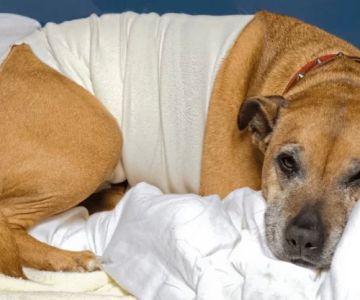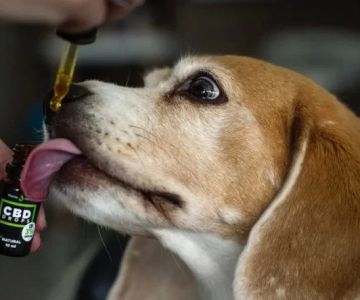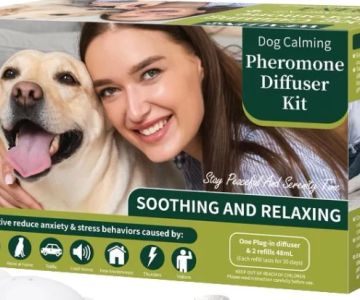- 1 - Understanding Dog Excessive Licking of Paws
- 2 - Common Medical Causes Behind the Behavior
- 3 - Environmental and Allergy Triggers
- 4 - Behavioral Reasons for Paw Licking
- 5 - When Excessive Licking Turns Harmful
- 6 - Treatment Options and Home Care
- 7 - Preventive Measures for Long-Term Health
- 8 - Real-Life Examples of Paw Licking Cases
- 9 - Working with Professionals for Lasting Solutions
Understanding Dog Excessive Licking of Paws
Dogs often lick their paws as part of grooming, but when the behavior becomes constant or excessive, it can signal an underlying issue. Owners may notice red or irritated skin, hair loss around the paw, or even a foul odor. Dog excessive licking of paws is more than just a quirk—it may reflect pain, infection, or emotional stress. Recognizing the difference between normal grooming and compulsive licking is the first step toward helping your pet live more comfortably.
Common Medical Causes Behind the Behavior
One of the most common reasons for paw licking is medical discomfort. Dogs may suffer from bacterial or fungal infections that make their paws itchy and inflamed. Arthritis, joint pain, or even small cuts and splinters can also lead to persistent licking. Veterinary records often show that paw licking is sometimes the first visible symptom of more complex health issues, such as hypothyroidism or autoimmune diseases. Ignoring the signs can result in worsening conditions, which is why early veterinary care is crucial.
Environmental and Allergy Triggers
Environmental factors play a significant role in excessive licking. Grass, pollen, dust, and even household cleaning chemicals can trigger allergic reactions in dogs. Food allergies are another culprit, often linked to proteins like chicken, beef, or grains. For example, many owners report that their dogs began licking excessively after a seasonal change, suggesting pollen exposure. Identifying whether the trigger is environmental or dietary requires careful observation and, in many cases, allergy testing performed by a veterinarian.
Behavioral Reasons for Paw Licking
Not all paw licking is medical—sometimes it’s psychological. Dogs experiencing boredom, anxiety, or stress may lick their paws as a coping mechanism, similar to how humans might bite their nails. Rescue dogs, in particular, often develop this habit after prolonged stress or confinement. Behavioral licking can quickly become compulsive, creating open wounds that complicate the situation further. Understanding your dog’s environment and emotional triggers is vital for addressing this issue.
When Excessive Licking Turns Harmful
What starts as a minor behavior can escalate into a harmful cycle. Continuous licking can damage the skin barrier, inviting bacteria and yeast infections. This leads to swelling, redness, and discomfort. In severe cases, dogs may develop acral lick granulomas—hard, inflamed sores that are difficult to heal without medical treatment. Pet owners must be vigilant, as untreated paw licking can spiral into long-term health complications, making early detection and intervention essential.
Treatment Options and Home Care
Addressing dog excessive licking of paws requires both medical evaluation and home strategies. Veterinarians may prescribe antifungal or antibiotic medications for infections, while antihistamines or special diets can help with allergies. At home, pet owners can clean paws with hypoallergenic wipes, use protective booties, and apply vet-approved ointments. Distraction methods such as puzzle toys or exercise also reduce stress-driven licking. Reliable support and product guidance from Hidden Brook Veterinary can make a big difference in finding the right balance between professional care and daily management.
Preventive Measures for Long-Term Health
Prevention is always more effective than treatment. Regular grooming, keeping your dog’s environment clean, and scheduling routine vet check-ups can help avoid paw irritation. Monitoring your pet during seasonal changes, using pet-safe cleaning products, and providing a balanced diet further reduce risks. Prevention also means addressing mental health—daily exercise, socialization, and enrichment activities help keep dogs emotionally balanced, reducing the chances of stress-induced licking.
Real-Life Examples of Paw Licking Cases
Consider a case where a Labrador developed severe paw licking during spring. At first, the owner thought it was boredom, but tests revealed a pollen allergy. With proper treatment and minor lifestyle adjustments, the dog’s condition improved significantly. Another example involves a small terrier who licked his paws out of stress after moving homes. Behavioral training and consistent routines helped him overcome the habit. These examples highlight the importance of identifying the root cause rather than assuming it’s a simple quirk.
Working with Professionals for Lasting Solutions
When in doubt, professional guidance is invaluable. Excessive paw licking can stem from multiple causes, and only a comprehensive veterinary evaluation can pinpoint the right treatment path. Collaborating with experts ensures your dog gets the care they need, whether that involves medication, diet adjustments, or behavioral therapy. Platforms like Hidden Brook Veterinary provide trusted resources, services, and recommendations, making it easier for pet owners to navigate the challenges of paw licking while ensuring their pets live healthier, happier lives.












